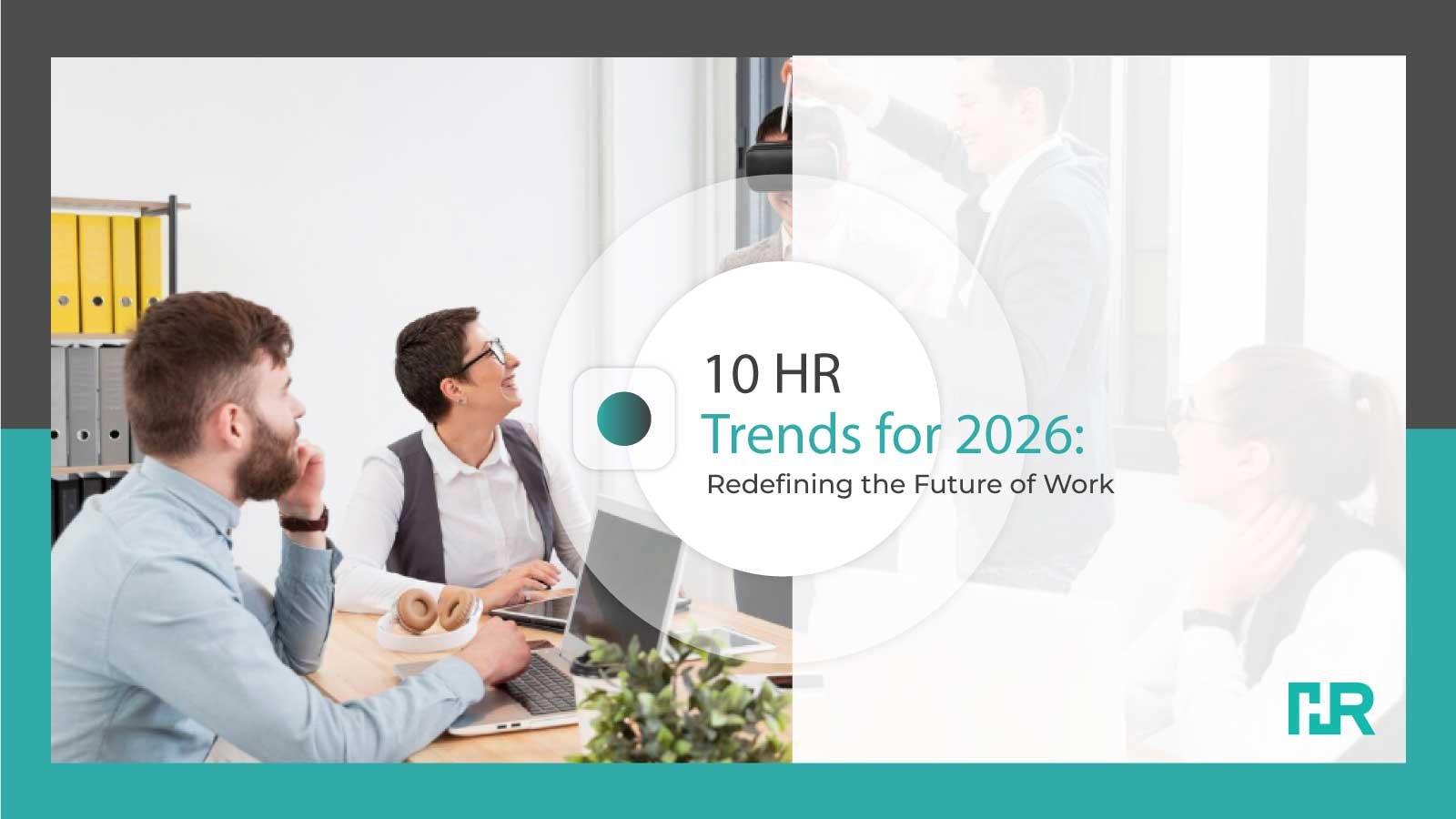
As we approach 2026, the HR function is entering a transformative era. Technologies once viewed as optional are now mission-critical, employee expectations have evolved, and business demands are shifting rapidly. Below are ten key trends that HR leaders and practitioners must watch and act on to remain relevant and strategic.
Artificial intelligence (AI) is no longer a pilot - it’s becoming the backbone of HR. Leading organisations are shifting from manual workflows to AI-enabled talent acquisition, performance management, and workforce planning.
Key shifts include:
Automating resume screening, candidate sourcing, and onboarding steps
Embedding predictive analytics into talent-mobility and retention decisions
Re-imagining HR service delivery through AI-augmented chatbots and assistants
Why it matters: By 2026, HR teams who treat AI as a strategic capability (not just a cost-saver) will drive disproportionate impact.
Jobs are evolving into fluid, skills-rich roles. Instead of hiring strictly according to a job description, organisations are moving toward mapping underlying skills and prioritising internal mobility.
According to the World Economic Forum’s Future of Jobs Report 2025, around 39% of existing worker skill-sets are expected to be transformed or become outdated between 2025 and 2030.
What to focus on:
Create a skills taxonomy common across HR systems
Invest in reskilling and upskilling pathways aligned with business strategy
Move from “head‐count” metrics toward “capability” metrics
Impact: Firms that forward-map skill gaps can shift from reactive hiring to proactive talent development.
Work is no longer bound by geography alone. Hybrid, flexible, and distributed operating models continue to mature, and HR must lead the change.
Considerations:
Redesigning roles for remote/hybrid contexts
Using digital tools to support connectivity, culture, and belonging
Adapting performance, collaboration, and onboarding for the borderless workforce
Why now: As the workforce becomes more distributed, the companies that manage “where, when, and how” work well will gain a clear talent advantage.
Modern employees expect experiences tailored to their role, location, preferences, and life stage. This trend extends far beyond perks.
Highlights:
Platforms that recommend development pathways, mobility opportunities, and career moves based on individual profiles
Wellness, financial, and well-being benefits are embedded into everyday work journeys
Employee-centric design in HR systems, not just efficiency-oriented automation
Takeaway: HR will need to treat the workforce more like internal customers—with experience strategy, not just policy compliance.
The era of “gut feel” HR is receding. Through advanced analytics, sentiment tracking, and predictive modelling, HR can become more strategic.
Applications include:
Forecasting turnover risk and intervening early
Aligning HR metrics with business KPIs (e.g., revenue per employee, skills velocity)
Monitoring culture, engagement, and change readiness in real time.
Implication: Organisations that build analytics maturity will gain insights faster and act more decisively.
With greater use of AI and automation comes greater scrutiny. HR must balance efficiencies with fairness, transparency, and employee trust.
What this means:
Establish governance for AI/automation in talent decisions
Be transparent with employees about how their data is used
Guard against bias, especially in recruiting, reward, and mobility
Why it matters: Failure to address these issues can erode culture and expose organisations to risk.
In a fast-shifting work environment, culture and leadership are more important than ever. According to Gartner, CHROs prioritise mobilising leaders and embedding culture for performance.
Key moves:
Move from episodic change projects to “routinising” change, making agility the norm
Develop leaders who can translate strategy into day-to-day behaviours
Embed culture into workflows, systems, and decisions, not just posters
Outcome: Organisations that treat culture as strategic will outperform peers on performance and retention.
Talent competition is global, and the HR playbook must adapt. Organisations must manage complexity across geographies and time zones.
Focus areas:
Compliance, payroll, benefits, and mobility frameworks for cross-border workers
Virtual-first talent pools and “anywhere work” models
Inclusive culture that spans physical and digital locations
Advantage: Companies that design for global scale from the talent standpoint will expand their access and flexibility.
Well-being is no longer an add-on - it’s central to retention, productivity, and culture. Organisations will increasingly invest in holistic programs covering mental, financial, and physical health.
Important shifts:
Flexibility in work arrangements is built into well-being strategy
Platforms offering proactive support (e.g., predictive stress analytics)
Integration of well-being into the normal workflow, not as separate initiatives
Why 2026 matters: With tighter labour markets and shifting worker expectations, companies that treat well-being as strategic will win the talent war.
By 2026, HR technology will shift further from siloed tools to integrated platforms that connect talent, learning, analytics, payroll, and experience.
Important aspects:
Cloud-based HCM systems with embedded AI and analytics
Internal marketplaces & mobility platforms linking roles, projects, and skills
Seamless UX for employees and managers alike
Final point: Technology is the enabler - but only when built for flexibility, integration, and continuous evolution.
The world of work is evolving fast, and HR is at the heart of that shift. From AI and skills-based models to global talent strategies and holistic well-being, the function must be agile, strategic, and human-centred. The organisations that will thrive in 2026 are those that view HR not as a cost centre, but as a front-line enabler of business performance and culture. Staying ahead of these ten trends and applying them thoughtfully will be critical.
For leaders looking to accelerate this transformation, now is the time to audit your HR strategy, align tech and capability, and build the muscle to adapt. Because the future of work won’t wait.